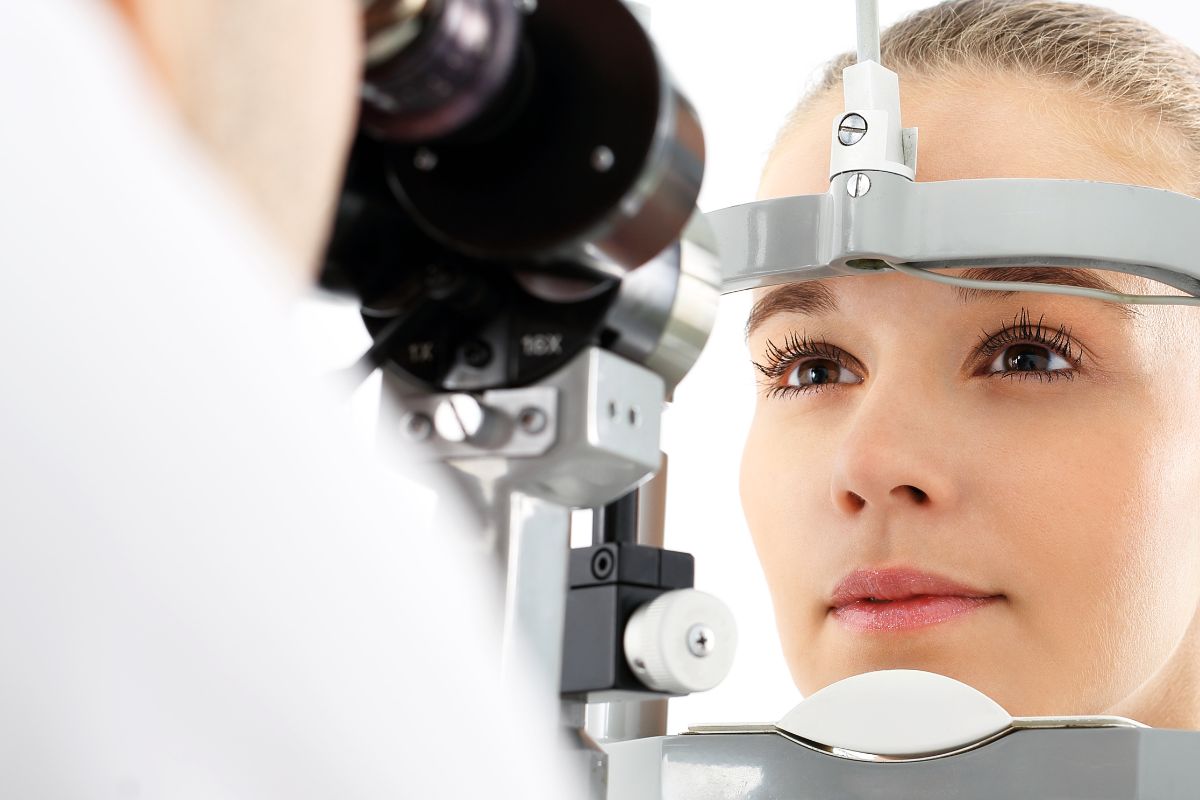Understanding Allergic Conjunctivitis: Causes, Symptoms, and Effective Treatment Strategies in 2025
Allergic conjunctivitis, also known as allergic eye disease, is a prevalent condition affecting millions worldwide. Characterized by inflammation of the conjunctiva—the transparent membrane lining the eyelids and covering the sclera (the white part of the eye)—it significantly impacts daily life, causing discomfort and visual impairment. This comprehensive guide delves into the intricacies of allergic conjunctivitis, exploring its root causes, diverse symptoms, and the latest treatment strategies available in 2025. We will explore the various types of allergic conjunctivitis, delve deeper into its causes, examine a wider range of symptoms, discuss advanced treatment options, preventative measures in detail, and explain when to seek professional medical attention. This detailed guide aims to empower you with knowledge to effectively manage this common condition.
The Multifaceted Nature of Allergic Conjunctivitis
Allergic conjunctivitis is not a monolithic condition; it presents in various forms, each with its own set of triggers and characteristics. Understanding these nuances is crucial for effective management. The primary classifications include:
- Seasonal allergic conjunctivitis: This type is triggered by seasonal allergens like pollen (tree, grass, and weed) and typically occurs during specific times of the year. Symptoms often align with the pollen season's peaks.
- Perennial allergic conjunctivitis: Unlike its seasonal counterpart, perennial allergic conjunctivitis is present year-round. Common triggers include house dust mites, pet dander, and mold spores, which are consistently present in the environment.
- Atopic keratoconjunctivitis: This is a more severe form of allergic conjunctivitis, often associated with other atopic conditions like asthma and eczema. It involves a more intense inflammatory response and can lead to significant complications if left untreated.
Delving Deeper into the Causes: Allergens and Their Impact
The root cause of allergic conjunctivitis lies in the body's immune system overreacting to otherwise harmless substances—allergens. Upon contact with the eye, these allergens trigger a complex chain of events: the immune system releases histamine and other inflammatory mediators, leading to the characteristic symptoms. Common allergens include:
- Pollen: Various types of pollen, depending on the geographical location and time of year, are frequent culprits. Birch, ragweed, and grasses are prominent examples.
- Pet dander: Proteins present in the saliva, urine, and skin flakes of pets, particularly cats and dogs, can be potent allergens.
- Dust mites: Tiny arachnids that thrive in bedding, carpets, and upholstered furniture are a common indoor allergen.
- Mold spores: Airborne fungi release spores that can trigger allergic reactions in susceptible individuals. Mold is commonly found in damp environments.
- Cosmetics and contact lens solutions: Certain preservatives and ingredients in cosmetics and contact lens solutions can irritate the eyes and cause allergic reactions.
- Foods: In some cases, ingested foods can trigger an allergic reaction that manifests in the eyes.
A Comprehensive Look at Symptoms: Recognizing the Signs
The symptoms of allergic conjunctivitis can vary widely in intensity and presentation, but some common signs include:
- Itching: Intense itching is often the most prominent symptom, causing significant discomfort and a strong urge to rub the eyes. This rubbing, however, can exacerbate the condition.
- Redness: The conjunctiva becomes inflamed and blood vessels dilate, resulting in noticeable redness of the eyes. This redness is often diffuse and involves both eyes.
- Watery eyes: Excessive tearing is a typical response to irritation and inflammation, often accompanied by a clear, watery discharge.
- Eyelid swelling: The eyelids may become puffy and swollen, particularly in the morning, due to fluid retention.
- Burning or gritty sensation: Patients often describe a feeling of foreign material or irritation in the eyes, as if something is constantly rubbing against them.
- Light sensitivity (photophobia): Exposure to bright light can become uncomfortable or even painful.
- Stringy mucus: In some cases, a stringy, white mucus discharge may be present.
Advanced Treatment Options: Managing and Alleviating Symptoms
Treatment strategies for allergic conjunctivitis are multifaceted and tailored to the individual's needs and the severity of their symptoms. Options include:
- Over-the-counter antihistamine eye drops: These provide quick relief from itching and redness by blocking the action of histamine, a key inflammatory mediator.
- Prescription antihistamine eye drops: Stronger, prescription-strength antihistamine drops are available for more severe cases or those unresponsive to over-the-counter options.
- Mast cell stabilizers: These eye drops prevent the release of histamine and other inflammatory mediators from mast cells, reducing the allergic response.
- Corticosteroid eye drops: Corticosteroids are potent anti-inflammatory medications that can effectively reduce swelling and itching, but long-term use should be avoided due to potential side effects.
- Oral antihistamines: Oral antihistamines can provide systemic relief from allergic symptoms, including those affecting the eyes.
- Immunotherapy (allergy shots): For individuals with severe or persistent allergic conjunctivitis, immunotherapy may be considered. This involves gradually desensitizing the body to specific allergens.
- Cold compresses: Applying cool compresses to the eyes can provide temporary relief from itching and swelling.
- Artificial tears: Lubricating eye drops can help alleviate dryness and irritation.
For soothing relief and promoting eye health, consider the Wise Quest Soothing Eye Patches - 3-Month Wellness Pack. These patches, infused with the power of traditional Chinese herbal medicine, offer a unique approach to managing eye discomfort. They effectively relieve eye fatigue, dryness, astringency, redness, and swelling, often associated with prolonged screen time or environmental irritants. The patches promote healthy blood circulation, contributing to overall eye well-being.

Comprehensive Preventative Measures: Minimizing Allergen Exposure
While treatment alleviates symptoms, proactive prevention is crucial for managing allergic conjunctivitis effectively. Strategies include:
- Identifying and avoiding triggers: Keeping a detailed allergy diary can help identify specific allergens that trigger your symptoms. Once identified, you can take steps to minimize your exposure.
- Environmental control: Reducing allergen levels at home and work is vital. Regular cleaning, using air purifiers with HEPA filters, and encasing mattresses and pillows in allergen-proof covers can significantly decrease exposure to dust mites.
- Outdoor precautions: During peak pollen seasons, limit outdoor activities, particularly during high-pollen periods. Wearing sunglasses and avoiding rubbing your eyes can help minimize irritation.
- Proper hygiene: Washing hands frequently and avoiding touching your eyes can prevent the transfer of allergens.
- Showering after outdoor activities: Showering after being outdoors can help wash away pollen and other allergens that may have settled on your skin and hair.
When Professional Medical Attention is Necessary
While many cases of allergic conjunctivitis can be managed with home remedies and over-the-counter treatments, seeking professional medical attention is necessary in certain situations:
- Severe or persistent symptoms: Symptoms that don't respond to over-the-counter treatments or worsen despite home management should be evaluated by a doctor.
- Blurred vision: Blurred vision, even temporarily, can indicate a more serious underlying condition requiring immediate attention.
- Secondary infection: The presence of pus, yellow discharge, or significant pain could signal a secondary bacterial or viral infection requiring antibiotic or antiviral treatment.
- Suspected corneal involvement: If you suspect the cornea (the clear front part of the eye) is affected, immediate medical attention is crucial to prevent potential damage.
- Uncertain diagnosis: If you are unsure about the cause of your eye symptoms, it's essential to seek professional medical advice for proper diagnosis and treatment.
Conclusion: Empowering You to Live Comfortably with Allergic Conjunctivitis
Allergic conjunctivitis can significantly impact daily life, but with a combination of effective treatment strategies, proactive prevention, and timely medical attention, individuals can effectively manage the condition and maintain optimal eye health. Understanding the various types, causes, and symptoms is crucial for personalized management. Remember to consult with a healthcare professional for personalized advice and guidance. By taking a proactive and informed approach, you can minimize disruptions and live comfortably with allergic conjunctivitis. Utilizing products like the Wise Quest Soothing Eye Patches - 3-Month Wellness Pack can complement traditional treatments, offering additional relief and promoting overall eye health. Prioritize your eye health and experience the difference!









